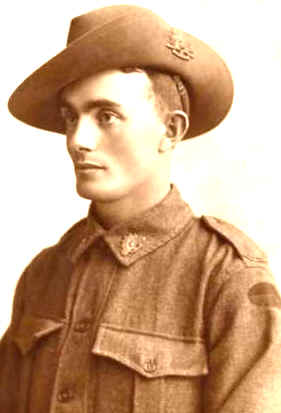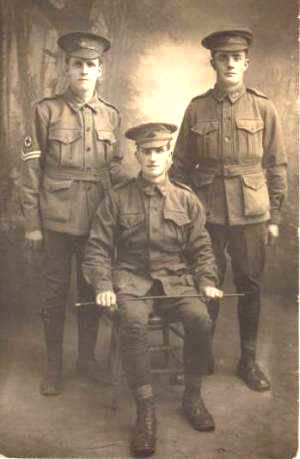 |
|
|||
|
|
||||

|
 |
 |
37th BattalionThe 37th Battalion was formed, as part of the 10th Brigade of the 3rd Australian Division, in February 1916 at Seymour in Victoria. Its recruits were drawn from Melbourne, north-east Victoria and Gippsland. After training in both Australia and Britain, the battalion moved to France on 23 November 1916. Within a week it had begun to occupy trenches on the Western Front, just in time for the onset of the terrible winter of 1916–17. During this time the 3rd Division was heavily involved in raiding the German trenches. In February 1917 the 37th Battalion provided 400 troops, with a similar party from the 38th Battalion, to form a special raiding “battalion”. After several weeks of training this force staged a single 35-minute raid on the night of 27 February and was then disbanded The 37th fought in its first major battle at Messines, in Belgium, between 7–9 June 1917. For his actions during this battle, Captain Robert Grieve was awarded the Victoria Cross. The battalion fought in another two major attacks in this sector – the battle of Broodseinde on 4 October, and the battle of Passchendaele on 12 October. Belgium remained the focus of the 37th Battalion’s activities for the next five months, until it was rushed south to France in late March 1918 to meet the German Army’s Spring Offensive. The Allies launched their own offensive on 8 August 1918, but the 37th Battalion was in reserve on this day and was not ordered into action. It was involved, however, in an ill-conceived attack that failed to capture the village of Proyart on 10 August. The battalion nevertheless continued to play an active role throughout August and early September in the 3rd Division’s advance along the Somme Valley. Despite its success, this advance sapped the strength of the AIF. In September 1918 several battalions were ordered to disband to provide reinforcements for others. The 37th was one such battalion. Its CO, Lieutenant Colonel Charles Story, was dismissed for questioning the order in letters written to all of his superior commanders, including the Prime Minister. The men of the battalion subsequently mutinied. On 23 September the order to disband was temporarily suspended, and the battalion fought its last battle – St Quentin Canal – six days later. On 12 October 1918 the 37th Battalion, then with a fighting strength of 90, disbanded. Text from AWM
|
